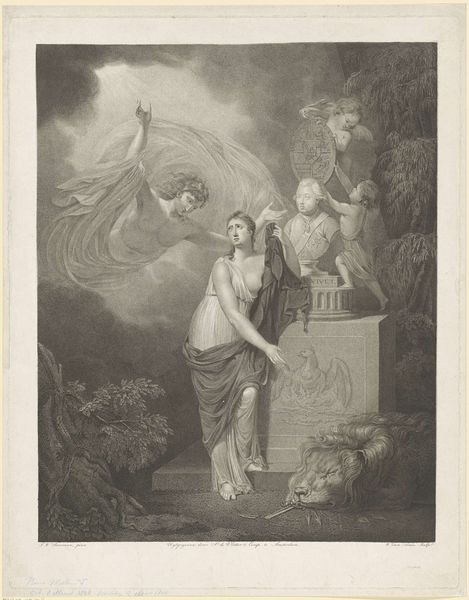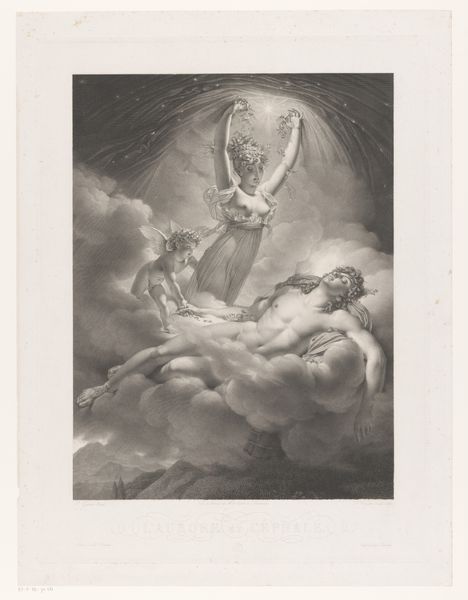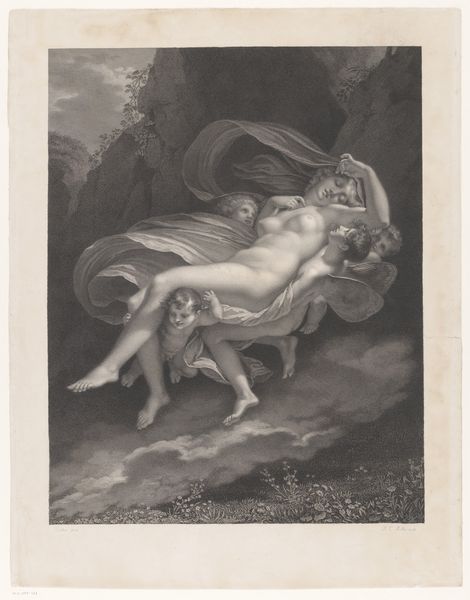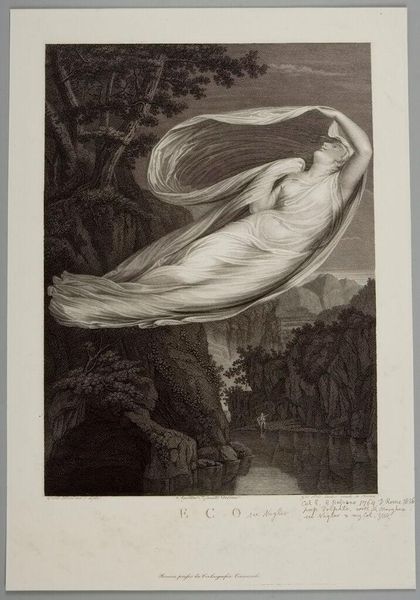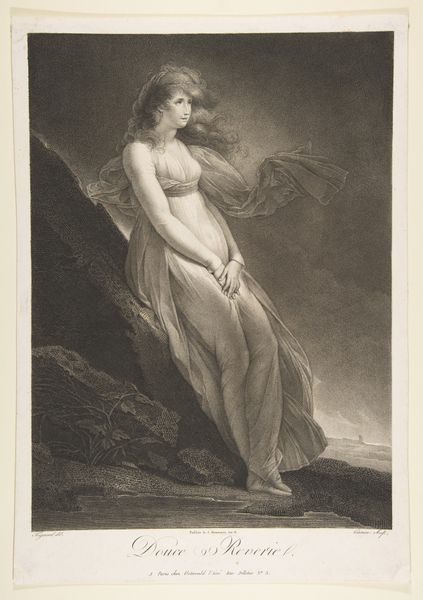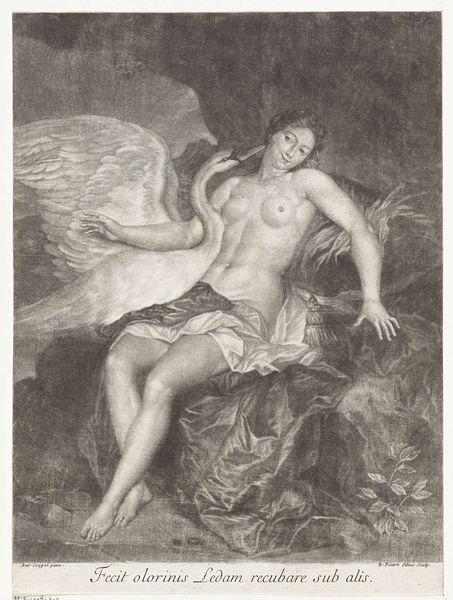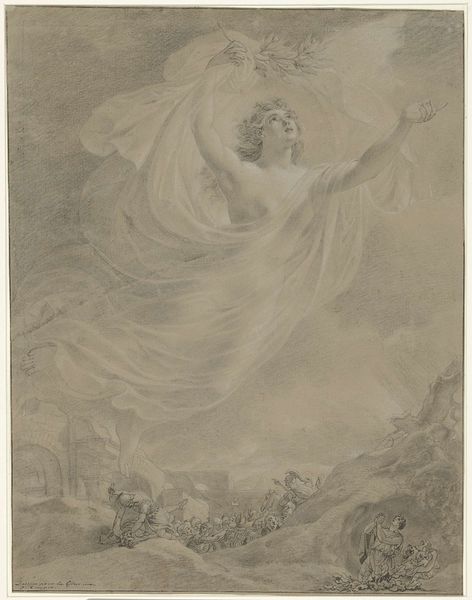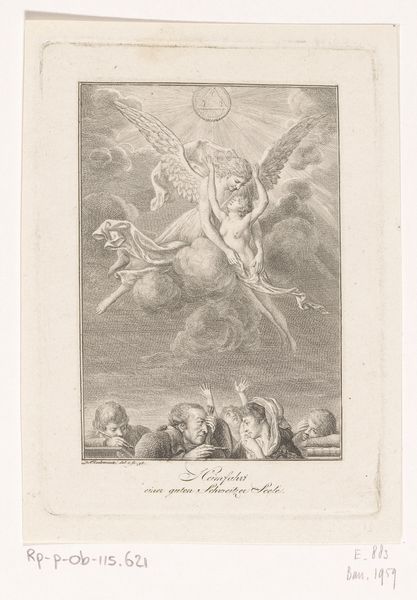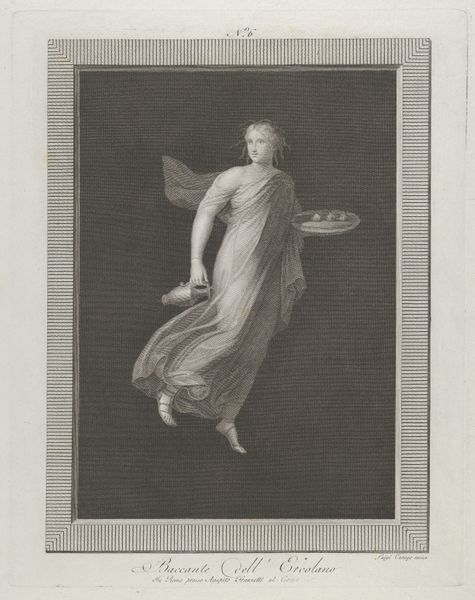
engraving
#
allegory
#
muted colour palette
#
symbol
#
light coloured
#
landscape
#
historical fashion
#
romanticism
#
history-painting
#
nude
#
engraving
Dimensions: height 613 mm, width 468 mm
Copyright: Rijks Museum: Open Domain
Curator: This is Ludwig Gottlieb Portman’s "Allegorie op de Vrede van Amiens," an engraving created in 1802, currently residing here at the Rijksmuseum. Editor: It’s dreamlike, almost ethereal. The light-colored palette and wispy lines give it an airy quality, like a half-remembered vision. Curator: Indeed. Portman employs a sophisticated visual language here. Observe how the composition is divided. The lower portion grounds us in historical specificity, depicting a crowd celebrating, framed by an imposing triumphal arch. Editor: Symbolically resonant given the Treaty of Amiens aimed to resolve conflict after the French Revolutionary Wars, but the nude figure floating above feels…disengaged. How complicit is this "allegory" in downplaying war’s harsh realities via this idealized representation? Who truly benefits from peace when portrayed like this? Curator: Consider the formal devices, though. The figure of Peace, rendered in soft lines and illuminated from within, is a clear focal point. Note how the artist manipulates light and shadow to guide the viewer’s eye from the celebratory crowd below to this central, allegorical figure. Semiotically, the olive branch confirms her symbolic role. Editor: Yet this peace, symbolized by a woman’s body, raises questions. Whose peace are we celebrating? Does it address gendered experiences within these power dynamics, or merely gloss over the true costs, particularly for women impacted by these power dynamics, through such romantic allegories? Curator: Your perspective highlights how the artist, while adhering to the aesthetic conventions of romanticism, participates in a complex historical and political discourse. The symbolism certainly invites such multi-layered readings of the artwork’s function. Editor: Exactly. Looking beyond pure form and delving into sociopolitical contexts uncovers the embedded complexities within what appears, at first glance, as a straightforward image of peace. Curator: An astute observation, revealing how rigorous formal analysis can intersect fruitfully with broader historical narratives. Editor: Indeed. Analyzing both structure and context gives richer appreciation, turning silent art into lively, relevant social commentary.
Comments
No comments
Be the first to comment and join the conversation on the ultimate creative platform.



